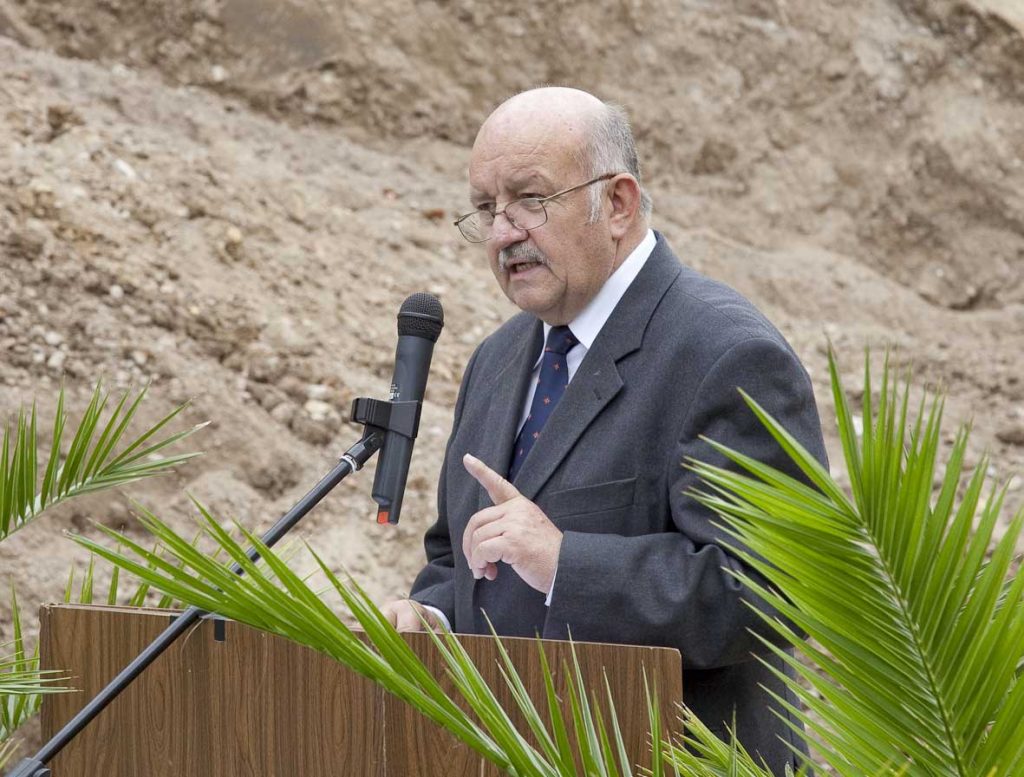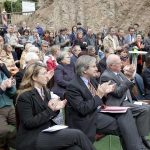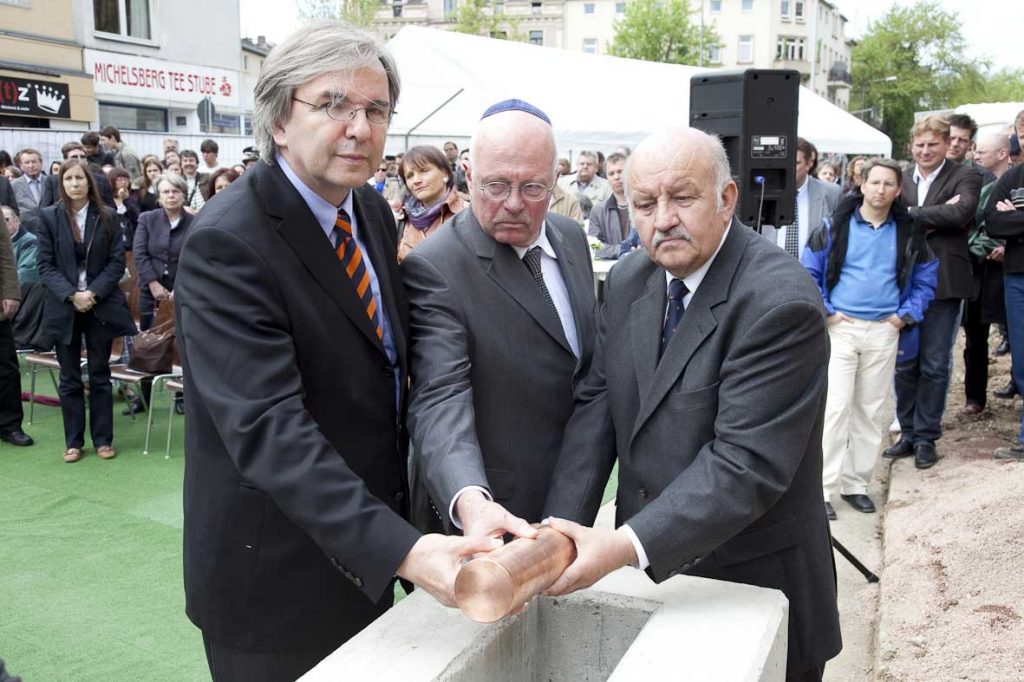
Wolfgang Nickel at the laying of the foundation stone.
(Photographer: Oliver Hebel)
Dear Lord Mayor, dear colleagues from the City Council and Magistrate, dear Dr. Gutmark, dear Ms. Willecke, ladies and gentlemen,
An idea is beginning to become reality. Today we are taking the first step. Today we lay the foundation stone for a memorial that reminds us of the darkest chapter of the German past. A memorial that makes us aware that under the rule of the National Socialists–in our city as well‒people of Jewish faith were deported to concentration camps and eventually murdered.
The memorial on the Michelsberg is intended to raise awareness that the Shoah is also a part of our own city’s history, and did not just happen somewhere in faraway Berlin or Nuremberg. As in many other German cities, Wiesbaden’s synagogues burned. In our city, too, people of the Jewish faith were not protected from the ravages of the National Socialist demon.
The memorial is intended to remind us of this. The names of all Wiesbaden citizens of whom we know that they fell victim to the Shoah will be indelibly listed here. An illuminated inscription band at eye level lists the names of the victims. They are thus brought out of anonymity into the light and given their identity in the public space.
In this way, remembrance becomes personal, and the memorial sets an unmistakable sign in our city.
Everyone should know and feel: Those who are named here –they were our fellow citizens. We in Wiesbaden also want to and must deal with the events of that time. I think this is very important, because a city’s society needs to deal honestly with its own past in order to maintain its self-respect.
The wound that was inflicted on the cityscape back then with the destruction of the synagogue will not be closed today. For we are not rebuilding the synagogue; its outline is merely hinted at on the floor of the memorial and on the roadway. But it is also not the essential goal of the construction to copy the old or even to heal what cannot be healed. What is being created here is ultimately responsibility turned to stone.
A responsibility that has been imposed on us by our city’s history. A responsibility that obligates us in the future: Never again may houses of worship burn in Wiesbaden, no matter what denomination. Never again should there be room in our city for hatred and violence against our fellow citizens. Never again must people who live here with us become victims of terror, persecution and extermination.
We all‒every citizen, every politician, everyone who has his or her home here, bears a share of responsibility for this. Everyone in his or her place must do his or her part to ensure that a climate of inner peace and mutual tolerance prevails in Wiesbaden. No one can steal away from this. Like all large projects, our memorial has had a long lead time. Many people worked on it, from the first visions, ideas and concepts to the increasingly concrete planning and construction, the beginning of which we are officially celebrating with today’s laying of the foundation stone. Under the professional direction of SEG, countless working-group meetings took place. The architect, Ms. Willecke, and her team did an excellent job of designing the building. Many employees of the city administration, especially the city archives and the city planning office, have worked with great commitment. The memorial would be unthinkable without the extremely valuable contributions of the Jewish Community and the Active Museum Spiegelgasse. They have played a decisive role in the statement, objective and meaning of the memorial. I would like to express my sincere thanks to all those who have contributed and will continue to do so.
I would like to mention one name in particular. For Angelika Thiels, my predecessor in the office of head of the city council, the memorial was an affair of the heart. She drove this project forward with all her strength, with great passion and with her own irrepressible energy. Unfortunately, she will not be able to experience today’s laying of the foundation stone. Angelika Thiels always emphasized how glad she was that the project was being realized with great bipartisan consensus and was not the subject of petty party squabbles. She believed that this consensus was due to respect for the victims. The fact that such a consensus has emerged permanently in our city parliament is due to the persuasiveness and personal integrity of Angelika Thiels. This building will be inseparably linked with her name.
Former chairman of the city council
Photographer: Oliver Hebel


















